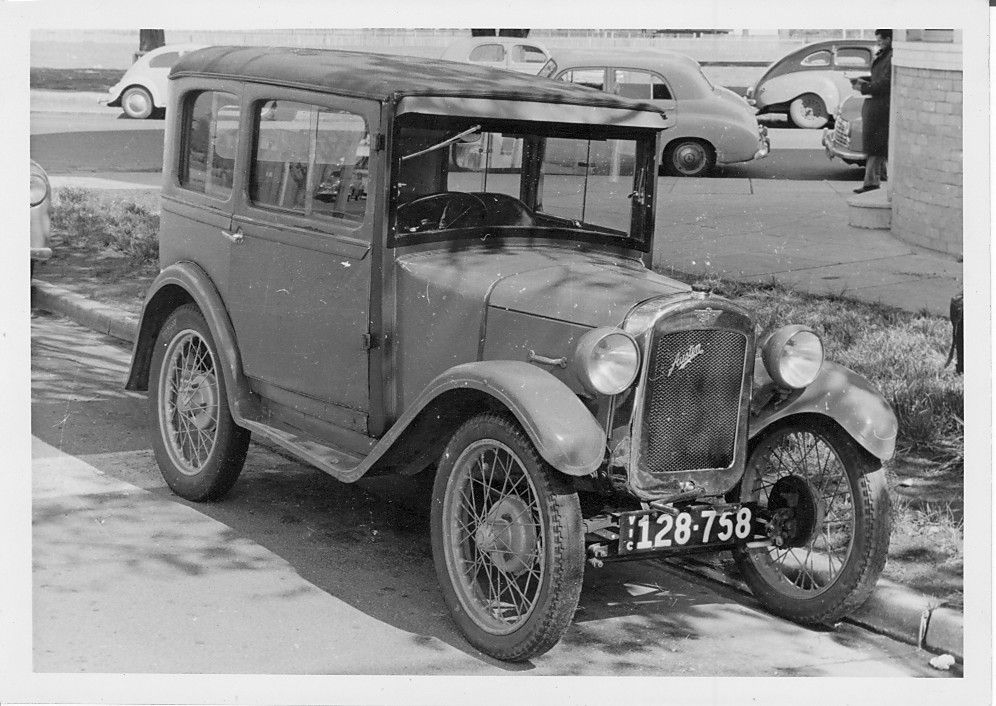
Welcome to the Austin Seven Friends web site and forum
As announced earlier, this forum with it's respective web address will go offline within the next days!
Please follow the link to our new forum
http://www.austinsevenfriends.co.uk/forum
and make sure, you readjust your link button to the new address!
Interested to know what the relation was between the SV engine used in the Austin Seven and the OHV engine used in the BMW 3/20?
Have heard some claim no such relationship exists between the engines yet others state otherwise, on top of that BMW also managed to develop the BMW M78 Inline-6 from the 3/20 OHV engine as well as a new small Inline-4 OHV unit (used in the BMW 309) derived from the M78 engine (which was later updated from early-50s into the M337 engine).
If the two engines are indeed related then it brings to question why it is said there was no scope to further develop the Seven engine, when BMW not only demonstrated it was indeed possible but could have even remained in use by Austin after the post-war period before being replaced in the 50s?
The engine for the 3/20 was effectively a completely new design, and the car was given the Suffix AM-1 (Automobile Munchen) to distinguish it from the Austin design; the earlier cars were given Suffixes DA-1 to DA-4 (Deutsche Austin or maybe Dixi Austin). Because the same transfer machinery was used, it still used the bore centres of the Austin engine, but the crankshaft had an increased stroke dimension (80mm) to give a capacity of 788cc. Plain crankshaft bearings replaced the roller bearings, camshaft drive was by duplex chain, a water pump was added, and of course the head was given overhead valves.
So basically, no, there was no commonality between the two engines.
I see. What prevented Austin from following a similar path to BMW in developing a completely new engine design from the same transfer machinery?
Herbert Austin was stubbornly wedded to the side-valve principle 

Have heard of Leonard Lord planning to have all Austins featuring OHV when WW2 intervened, though where did Ernest Payton stand on the matter and did others within Austin share similar views to Lord?
Given the Wolseley foray into OHC engines later used by Morris, which were immensely complicated and very expensive to produce, Austin's adherence to a simple well proven side valve engine for a cheap vehicle is understandable.
From pictures, the early BMW chassis has a remarkable similarity to the Austin Seven's 'A' frame.
Cheers, Tony.
Location: Melbourne. Victoria, Australia.
Wolseley's OHC engines are another matter, AFAIK not even Austin considered a production OHC or Twin-Cam engine.
It seems the trend towards OHV engines roughly began sometime during the 30s, with the post-war Morris Minor's potential as a Beetle rival even nipped in the bud as a result of being forced to use the old SV 918cc engine.
From pictures, the early BMW chassis has a remarkable similarity to the Austin Seven's 'A' frame.
Cheers, Tony.
None the less, it's interesting to note that the Austin Seven's main competitors in the late 1920s - the Morris Minor and the Singer Junior - were both fitted with ohc engines!
The DA-1, 2 & 3 chassis were pure Austin Seven; the DA-4 continued the basic design but with independent front suspension. But the 3/20 AM-1 chassis was an all new design with a box-section backbone frame with independent suspension front and rear.
Morris upgraded from OHC to sidevalve. Profit upgrade only!
Location: Richmond, Texas
For a detailed account of the twin cam engine, one can do no better than obtaining a copy of " The Classic Twin-Cam Engine " by Griffith Borgeson. This traces its history from the start of the 20th century to modern times. Incredibly detailed and fascinating.
While understanding why OHC was not reliable compared to Sidevalve (especially in the case of Morris), what prevented OHV from taking hold earlier like on the Vauxhall 10-4 or even the Wolseley Eight?
I don't think the problem with ohc cars was poor reliability so much as expensive maintenance bills.
In 1931 there were only four family cars (British or Continental) on the British market under 12hp (RAC rating) that were not side-valve: the long-wheelbase Morris Minor(which retained the ohc engine after the side-valve engine was adopted for the more popular models), the Riley Nine, the Rover 10/25, and the Singer Junior. Even by the outbreak of war, the majority of small family cars were still side-valve (Ford, Morris, Standard, as well as Austin) - they were just so much cheaper to manufacture (and maintain)!

